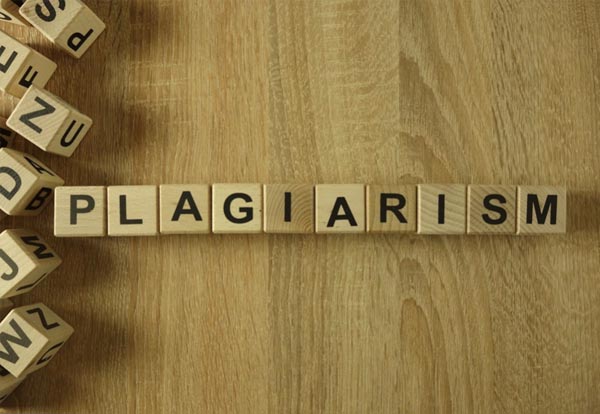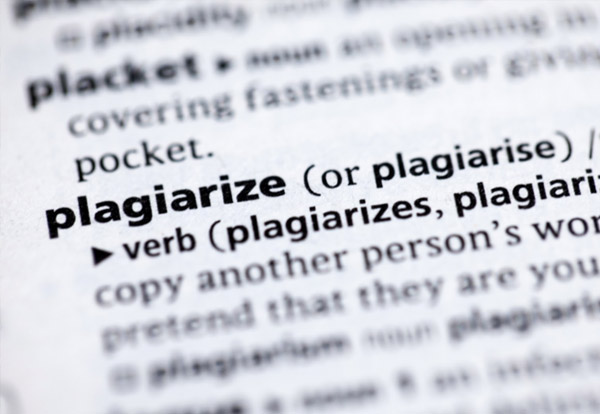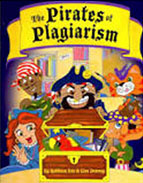HEY! THAT'S MINE!
Putting Ideas into Your Own Words and Avoiding Plagiarism
Introduction | Background Knowledge | Activities | Extensions

Introduction
21st Century students are more tech-savvy than any group of learners before them. They are digital natives and have access to the world at their fingertips. With that power comes great responsibility. Students are sharing pictures and memes and cutting and pasting information without giving it a second thought. We must teach students how to put thoughts and ideas into their own words, giving credit where credit is due. Students need explicit instruction on paraphrasing and citations to protect themselves and to teach them to be ethical users of information.
- Standards:
- ISTE Standards for Students: Digital Citizen 2c. Demonstrate an understanding of and respect for the rights and obligations of using and sharing intellectual property.
- AASL National School Library Standards, Engage Shared Foundation, Think Domain: Learners follow ethical and legal guidelines for gathering and using information by: 1. Responsibly applying information, technology, and media to learning. 2. Understanding the ethical use of information, technology, and media.
- AASL National School Library Standards, Engage Shared Foundation, Create Domain: Learners use valid information and reasoned conclusions to make ethical decisions in the creation of knowledge by: 1. Ethically using and reproducing others' work. 2. Acknowledging authorship and demonstrating respect for the intellectual property of others. 3. Including elements in personal-knowledge products that allow others to credit content appropriately.
- AASL National School Library Standards, Engage Shared Foundation, Grow Domain: Learners engage with information to extend personal learning by: 1. Personalizing their use of information and information technologies. 2. Reflecting on the process of ethical generation of knowledge. 3. Inspiring others to engage in safe, responsible, ethical, and legal information behaviors.
Background Knowledge

Plagiarism occurs when someone uses another person's thoughts or ideas as their own. It is so much more than stealing a term paper or copying someone's homework. It can be a quote from text, melodies from a favorite song, a photo or infographic, or sharing a funny meme on social media. Many students simply do not realize that cutting and pasting a paragraph from a digital encyclopedia is wrong.
An understanding of copyright is crucial. Copyright Kids (TeachersFirst review) gives both guidance and a quiz for review.
Paraphrasing is putting thoughts or ideas into your own words; this is the first step to avoiding plagiarism. The next step is to learn to cite sources correctly; by recording key information initially such as the book or article title, author, date of publication, website, etc. students can return to or direct others to find clarification if needed, making citation easier from the notes. Kindergarteners do not need to choose between APA, MLA, and Chicago style, but even our youngest students can learn to identify the title and author of the source they used to find their information. There are many citation resources to make this task easier for older students.
Activities

Online Resources
There are several online resources to help teachers present information about plagiarism. These resources include short videos that present plagiarism in student-friendly ways. Two universities have created resources, including a game appropriate for upper elementary students and above.
- Citation for Beginners is a great animated video addressing both plagiarism and citations.
- How to Paraphrase in 5 Easy Steps is a video with easy to understand suggestions.
- What is Plagiarism? offers a great explanation of plagiarism in a child-friendly video.
- 5 Tips for Avoiding Plagiarism is another short video to help to understand.
- Please Don't Cheat (TeachersFirst review) offers materials for teachers and students.
- Goblin Threat
- Find the goblins and answer questions about plagiarism and citing sources to save the college! This game has portions specific to the Lycoming College Library, but the majority of the information is appropriate for upper elementary students and above.
- Rutgers University Plagiarism Modules
- From Rutgers University, this three section-module helps explain plagiarism. Though this resource is aimed at college students, it would still be appropriate for upper elementary students and above.
Online Citation Tools
In the digital age, creating citations is easier than it ever has been. Students can learn to use these citation generators to make accurate entries for works cited pages or bibliographies.
- MyBib (TeachersFirst review)
- CitationMachine (TeachersFirst review)
- Citation Generator (TeachersFirst review)
- Easy Bib (TeachersFirst review)
- ZoteroBib (TeachersFirst review)
Pirates of Plagiarism

- The Pirates of Plagiarism by Kathleen Fox and Lisa Downey is a fun way to introduce the concept of plagiarism to younger students. Captain Bumbo and his band of pirates come into the library and break all of the rules. Students can identify their mistakes and explain how to avoid plagiarism.
Matching Games
- Students can practice matching paraphrased text, the copyrighted text, and corresponding citations with the sorting activity listed below at GameBuilder. These can be tailored to various age groups, printed, and can be made reusable by laminating for a non-tech approach or simply copied for an interactive notebook activity or an assessment. GameBuilder (TeachersFirst review) scroll down the page to find a Matching game generator that will help make online sorts of terms or paraphrased phrases that are game-like; students will also enjoy the game Chakalaka; these are relatively easy for even those who don't consider themselves tech-savvy.
Activities for Paraphrasing
- Paraphrase the Paraphrase
- Busy Teacher (TeachersFirst review) suggests this idea - divide the class into groups of four or five students per group. Provide each group with a paragraph that is on their reading level. Students work in groups to paraphrase their paragraphs. The teacher then collects the original paragraph and passes the paraphrased paragraph to the next group. The students then paraphrase the paraphrase. Do this at least twice then compare the paraphrases to the original.
- PBSLearning Media
- PBSLearning Media has a great lesson plan on paraphrasing. It is even offered in an interactive plan, Paraphrasing in a Pinch, which can be used for online teaching or flipped lessons.
- Play Telephone
- This game is a great way to teach students how to paraphrase by playing an old-fashioned game of telephone. As the message travels and changes, we can teach students how we paraphrase naturally. The message may change, but the meaning is always the same. Change the game to encourage paraphrase and see how much the meaning changes along the line.
Activities for Citations
- Citations are the Address for the Information
- Using school's or a well-known address (P. Sherman, 42 Wallaby Way, Sydney Australia is what I used in my class because the students were familiar with Finding Nemo), create a sort where the students can manipulate the address to put it in order. Discuss why it is important to have the address in order. Make the connection to citations and why it is important to have all of the correct information in the correct order. As in my example mentioned above, the next step is to practice with real books and websites in a hands-on fashion. The final step in the progression is to use an online citation generator to create a citation. Find more ideas about making citations fun at Informania - the site is geared for high schoolers but can be adapted for upper elementary and middle school.
Human Citations
- While this is still a sorting activity, get the students up and moving as they practice creating appropriate citations. On separate 8 ½ x 11 pieces of paper, print out each part of a citation in a large font, along with individual punctuation marks; when creating multiple citations, use different colors of paper for each individual citation and a basic color for the punctuation mark sheets. Have students arrange themselves to create the correct citation.
- Use GameBuilder (TeachersFirst review) and scroll down the page to find the Sequence game where the pieces of a citation can be correctly listed in the sequence. Creating multiple games with varied media types will help students learn how different citations appear.
Citation Scavenger Hunt
- Prove It! is an activity for middle and high school students, provided by ReadWriteThink (Review Here) to find evidence that supports a claim and cite it accordingly. There is a downloadable PDF to introduce the lesson and another for the student to complete.
Extensions

- Model how to cite their sources from Kindergarten on! If you are reading a nonfiction book and are asking students to recall information, ask them how they know. Show students how to go back into the book and find the information. Write the page number where you found the information/text evidence beside what the student recalled. Write the book's name and the author at the bottom of the anchor chart or graphic organizer such as a K-W-L chart.
- Develop a classroom culture where students practice paraphrasing throughout the day; this is an excellent way to promote listening skills and inference skills. When a student responds to a question, ask another student to paraphrase what the first said.
- Students can paraphrase a section or a chapter of the textbook during science and social studies content lessons.
- Use paraphrasing in guided reading to support a student's comprehension, especially in fiction books. Students can paraphrase a conversation or event in the book to show understanding.
